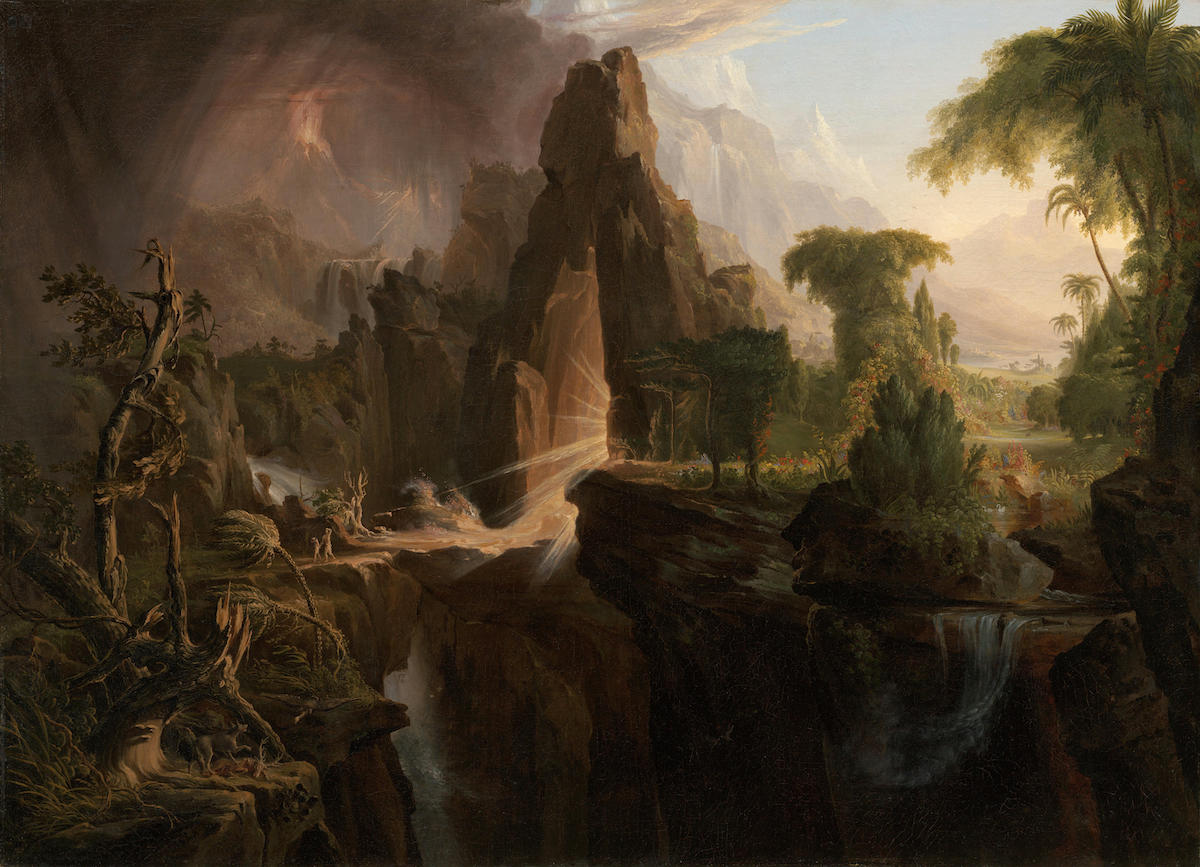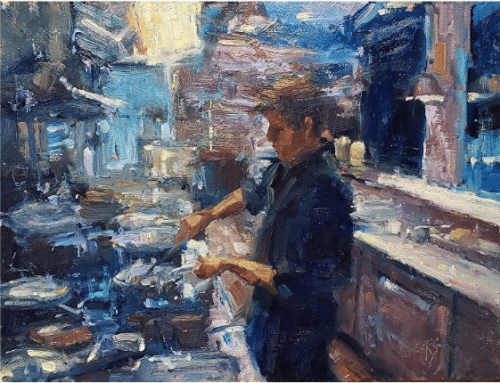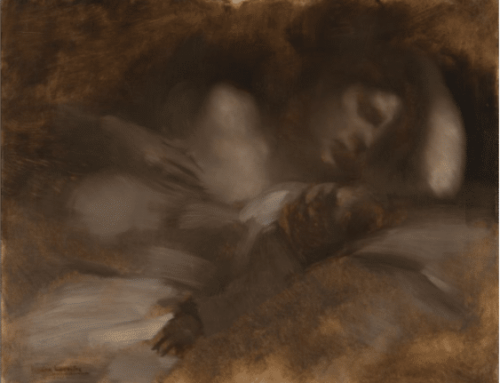“I must wait for time to draw a veil over the common details, the unessential parts, which shall leave the great features, whether the beautiful or the sublime, dominant in the mind.” – Thomas Cole
Thomas Cole is the father of American landscape painting, but he was born in Britain and trained in European Romanticism. Throughout his work, Cole makes use of symbolism and the Sublime. Cole’s embrace of the sublime, a category of beauty that late 18th and early 19th century European philosophers and artists defined, ensures his work still has much to say to us today.
According to notions of the sublime, the human element is dwarfed to the point of being overwhelmed by Nature, which is seen as a vast world of violent, churning forces coldly indifferent to any human suffering Nature might cause.
For Cole, there were few things more sublime than Nature embodying God’s wrath, as he painted in his dramatic Expulsion of Adam and Eve from the Garden of Eden of 1828.
The scenery is North American; Cole saw this natural land bridge over a gorge in New Hampshire’s White Mountains in 1827 (it’s since fallen).
Traditionally, representations of the event have Adam and Eve as the focal point, with their despair conveyed through their gestures. Cole has diminished the figures to tiny, minimally detailed ones, filling the landscape itself with all the grief and terror of one of civilization’s most potent foundational myths.
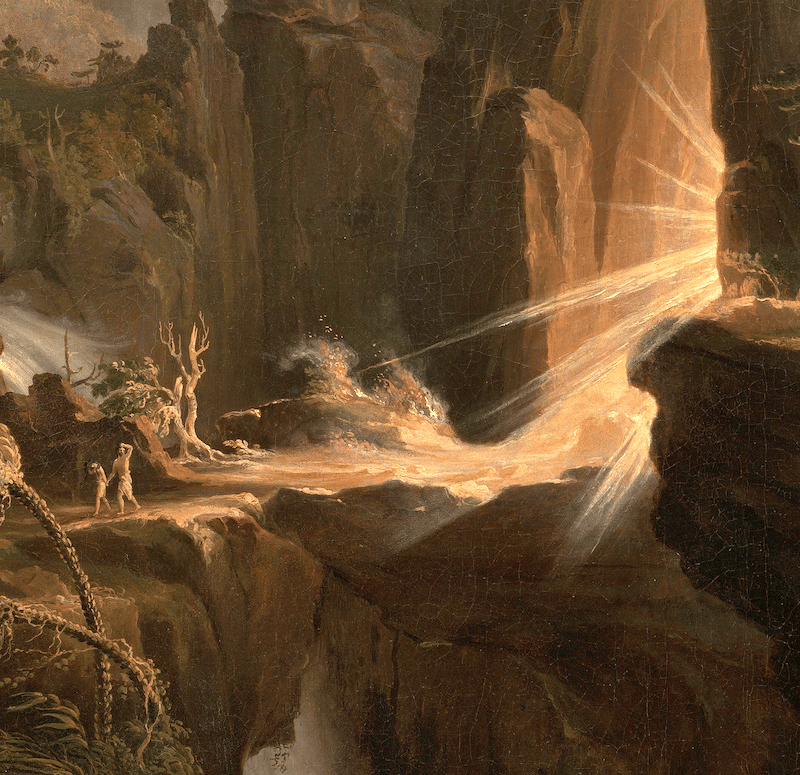
Thomas Cole, Expulsion from the Garden of Eden, detail center.
Consistent with the more or less dualistic vision of good and evil espoused by many strains of Christianity, the composition is divided exactly in half. On the viewer’s right is Paradise, away from which Adam and Eve are forcibly thrust by a bright ray of divine light. Cole’s Paradise is vibrant and full of life, lush with thriving wildlife and clear blue skies.
On the left side of the picture, Cole portrays the world after the Fall as the opposite of Paradise. It is dark and ominous, storm- and soot-choked, with the decaying trees, an angry volcano erupting in the background, and a wolf devouring a deer in the bottom left corner, snapping at a vulture trying to scavenge some of the carcass.

Thomas Cole, Expulsion from the Garden of Eden, detail lower left.
As amazing as the Expulsion from the Garden of Eden is, even more vivid is a second painting done at the same time titled Expulsion. Moon and Firelight. Here we have the same natural bridge and symmetrical composition. But this time Cole shifts the angle and removes the figures (neither Adam or Eve are present).
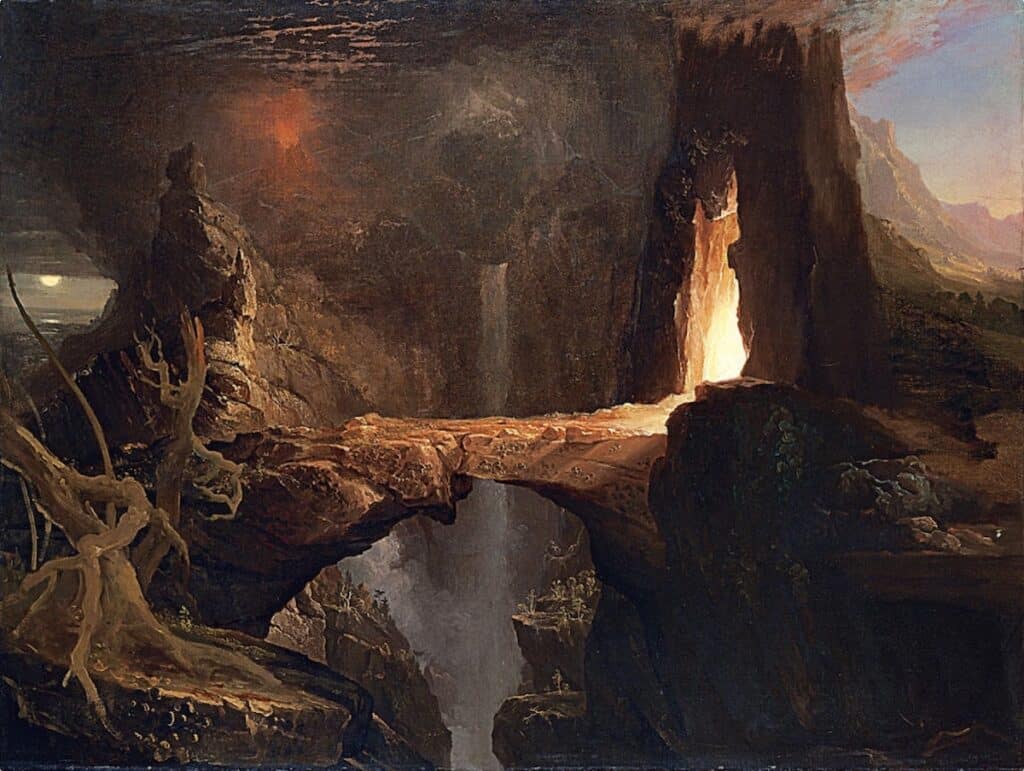
Thomas Cole, Expulsion. Moonlight and Fire, 1828. The work is part of the currently on exhibit American art collection at the Thyssen museum in Spain.
He also embeds a symbolic cross shape in the center, created by the waterfall and the bridge. On the right side it is a sunlit day, on the left, a moonlit night. In this version, the divine light is not coming from Paradise; rather, it’s confined to the stone portal itself. By removing the figures, Cole leaves much to interpretation. Is this the aftermath, after Adam and Eve have crossed the bridge and are now wandering in the benighted wilderness? The painting becomes more symbolic than narrative, its realm no longer religion but the Cosmos itself.
For Cole, art’s higher purpose was to open our eyes to human potential as well as to the value and beauty of the natural world around us. As early as the 1820s Cole saw which way things were trending; he feared the effects on nature of the rapid industrialization of the United States.
In these paintings, Cole portrays the North American landscape through the metaphor of Eden and the Fall. “We are still in Eden,” he said. “The wall that shuts us out is our own ignorance and folly.”
Too Hot to Move!
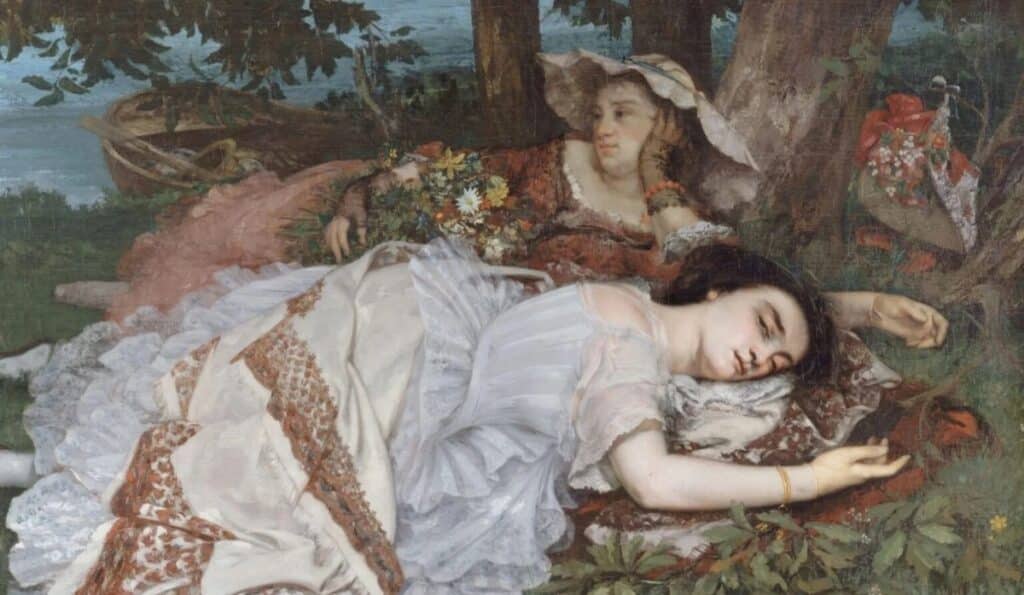
Gustave Courbet, The Young Ladies on the Bank of the Seine, 1856 (detail)
We’re having a heatwave and it’s too hot to move. But paint you must! How would you convey intense heat in your paintings? Send us pix and we’ll share with the group. For inspiration try this roundup of scorcher summer paintings.

